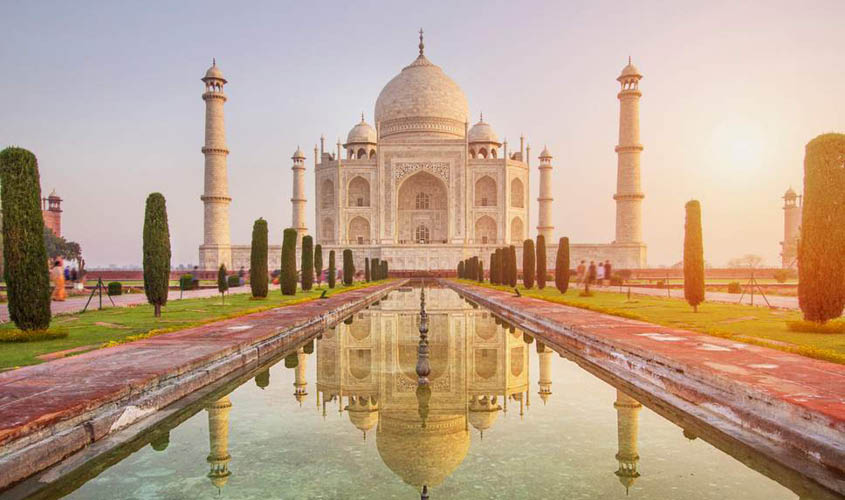Following the Supreme Court repeatedly pulling up the Centre and Uttar Pradesh government for failing to protect the Taj Mahal, officials in the Archaeological Survey of India (ASI) have pinned the blame on officials of the Taj Trapezium Zone (TTZ), saying that the TTZ is incapable of protecting the Taj.
A senior official at the ASI said, “The polluting industries and factories across the Taj Mahal zone are one of the biggest causes of concern and they are affecting the Taj. The responsibility of controlling this is with the TTZ board, but what is of concern is that some of the factories are still functioning and the TTZ board and Agra administration are doing little to control it.”
The official further said that the ASI, which is responsible for conservation and restoration of the Taj, is doing its duty diligently, but the other stakeholders have failed to work in coordination.
ASI officials also complained about the lack of coordination and cooperation between different agencies of the government. They have also questioned the authorities for failing to clean the Yamuna that flows right from the rear of the Taj Mahal, affecting the historic monument from its toxic pollutants.
“The recent incident of insects affecting the Taj, leaving imprints on its walls, was because the water at the Yamuna had totally stagnated and was heavily polluted, giving birth to these insects which at night found shelter on the Taj walls, leaving imprints on them. The responsibility for cleaning the Yamuna is with the Delhi government and Uttar Pradesh government; why have they failed to do it?” the ASI official said.
On the condition of anonymity, another official from the ASI said: “The TTZ board, the ASI, the Uttar Pradesh government and the district magistrate (DM) of Agra are supposed to work in coordination and cooperation with each other to ensure that the Taj is protected, but there seems to be no coordination between all these stakeholders. Every now and then, the commissioner of the TTZ board and the DM of Agra keep changing owing to the political nature of the posts, and this, in turn, hampers the process.” The TTZ board is an authority on environmental protection of the Taj Mahal in Agra. The TTZ is an area of about 10,400 square km spread over the districts of Agra, Firozabad, Mathura, Hathras and Etah in Uttar Pradesh and Bharatpur district of Rajasthan. The TTZ board is responsible for ensuring that no pollution takes place that could affect the Taj Mahal, along with ensuring other measures being undertaken from time to time for the protection and conservation of the Taj Mahal.
The apex court had last month reprimanded K. Ram Mohan Rao, chairman of the TTZ board, who had informed the court that it lacked infrastructure and was short staffed. The court had also reminded the TTZ that there were 1,167 polluting industries operating in the area and had termed the TTZ authority a “flop” and asked whether preservation of the iconic monument was a “tamasha” (drama) or a “joke”. The case is being heard by a bench of justices Madan B. Lokur and Deepak Gupta. According to sources in the Ministry of Culture, the Ministry had recently held a meeting with all the stakeholders, including the TTZ authority, the Director General of ASI and the administrative authorities of Agra, to take stock of the situation and put everything in place to ensure that the heritage monument is protected and preserved.
The ASI has further said that from time to time, several departments of the ASI stationed at Agra conduct structural stability test of the building, and check for any cracks that could have developed to the 16th century historical monument built by Shah Jahan in the memory of his beloved wife Mumtaz Mahal. Last year, the chemical engineering department of the ASI had also taken up the task of cleaning the Taj Mahal. According to officials in the Chemical Engineering branch of the ASI, the cleaning of the Taj is done by using a Multani mitti (mud) pack which is carefully applied to the walls and marbles on the Taj, thus removing the yellow tinge of the monument.

